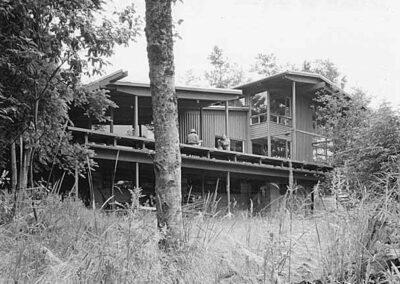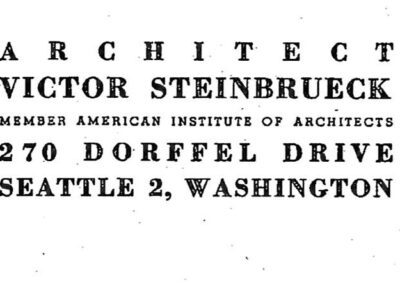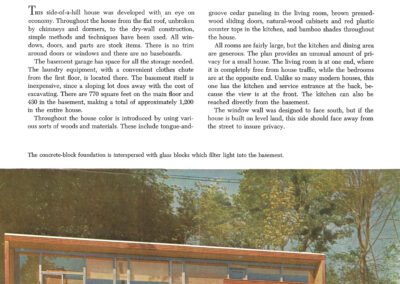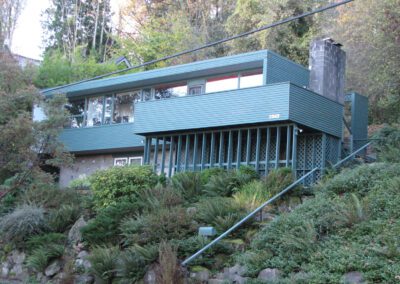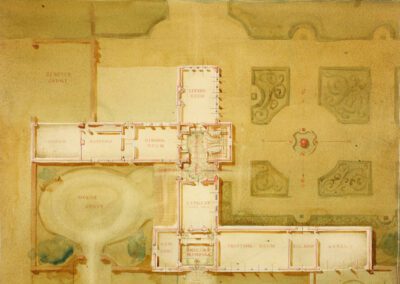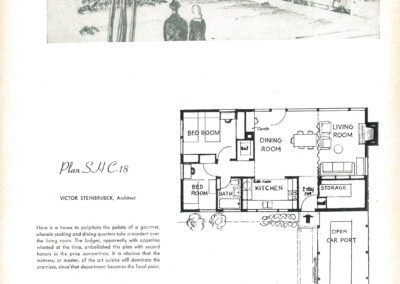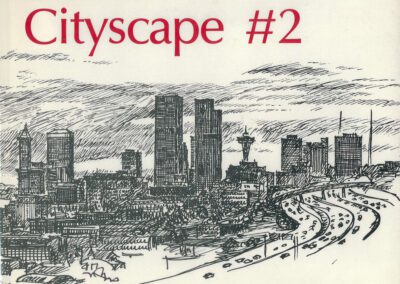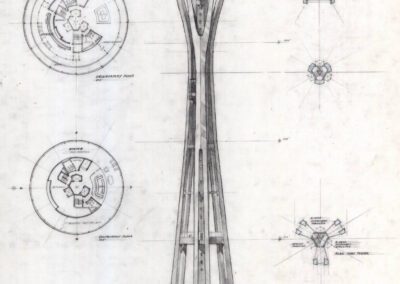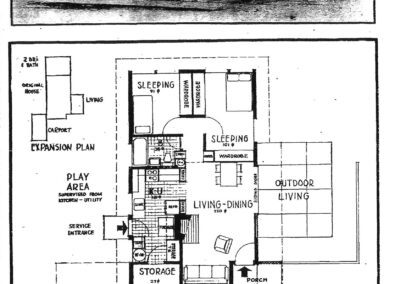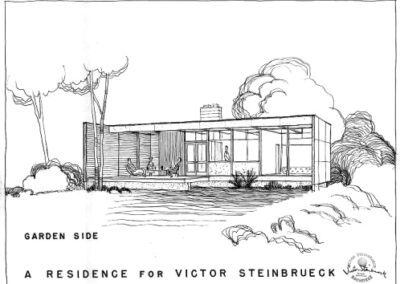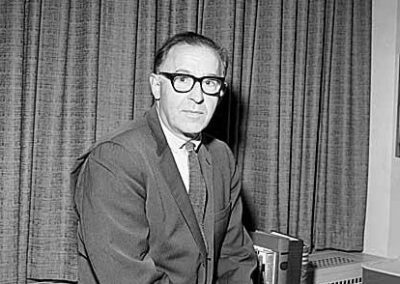
Steinbrueck, Victor E.
(1911 – 1985)
Perhaps best known as one of Seattle’s strongest advocates for historic preservation, Victor Eugene Steinbrueck, also had a significant and successful architectural career spanning more than thirty years.
Born in Mandan, North Dakota in 1911, Steinbrueck and his family moved to Washington in 1913. He attended Georgetown Elementary, and Cleveland and Franklin High Schools in Seattle, graduating in 1928. Although Steinbrueck started out at the University of Washington studying fisheries science, he completed a five-year course of study in architecture, graduating in 1935.
Two years later, he acquired his architectural license. Before opening his own private practice in 1938, Steinbrueck had gained valuable experience in a variety of architectural offices including William J. Bain (1935), J. Lister Holmes, Moe & Meyer(1937-38), and several firms in Los Angeles.
His early work focused on small well-designed homes. Many of the designs were published in a variety of architectural magazines and books. Among his more noteworthy projects was the Alden Mason House (1951) on Boyer Avenue in Seattle, which was featured in McCall’s Book of Modern Homes, and A Treasury of Contemporary Houses. The home was also a 1952 Seattle AIA Honor Award winner. Other notable work includes the Stellwagen House (1955), Steinbrueck House (1952), a home at 5411 Ravenna Ave., Barrett House (1956), the Anderson House (1958) in Auburn, and a home at 626 Randolph Place (1962) in Seattle.
In 1957, Steinbrueck relocated briefly to Michigan to work with former classmate, Minoru Yamasaki, but soon returned to Seattle where he completed designs for several more residences. Upon his return, he joined with fellow architect, Paul Hayden Kirk, to design the University of Washington Faculty Club (1960), which received a Seattle AIA Honor Award in 1960.
Steinbrueck is perhaps best known for completing the original concept for the Space Needle and designed the Exhibition Pavilion for the 1962 Seattle World’s Fair. A true Renaissance man, Steinbrueck was also an accomplished artist and his works are part of the collections of many galleries around the Pacific Northwest. Also an author, his influential book, A Guide to Seattle Architecture, 1850–1953, prepared for the National Convention of the American Institute of Architects in June 1953, is regarded as the first publication on Seattle architecture.
In 1946, Steinbrueck joined the UW faculty where he taught for thirty years until his retirement in 1976. His civic involvement focused around saving Pike Place Market from demolition, and developing more public spaces around the Westlake Mall area.
Steinbrueck’s contributions have been acknowledged by many honors and awards. He received the Architect of the Year Award in 1960 from the Washington State Chapter of the American Institute of Architects; and his Market Sketchbook won the Governor’s Book Award in 1969. This was followed up by Seattle Cityscape #2 in 1973. In special recognition for his efforts, Steinbrueck was named First Citizen of Seattle in 1977. Later, the mayor of Seattle named November 2, 1982 as Victor Steinbrueck Day. After Steinbrueck’s death in 1985, Pike Place Park was named Victor Steinbrueck Park in his honor.
– Michael C Houser
Student Drawing – University of Washington | 1932
Source: University of Washington Special Collections
Century 21 Exposition – Space Needle | Seattle
Built 1961 | Source: University of Washington Special Collections
Rendering for Steinbrueck Residence | Seattle
Built 1952 | Source: University of Washington Special Collections

